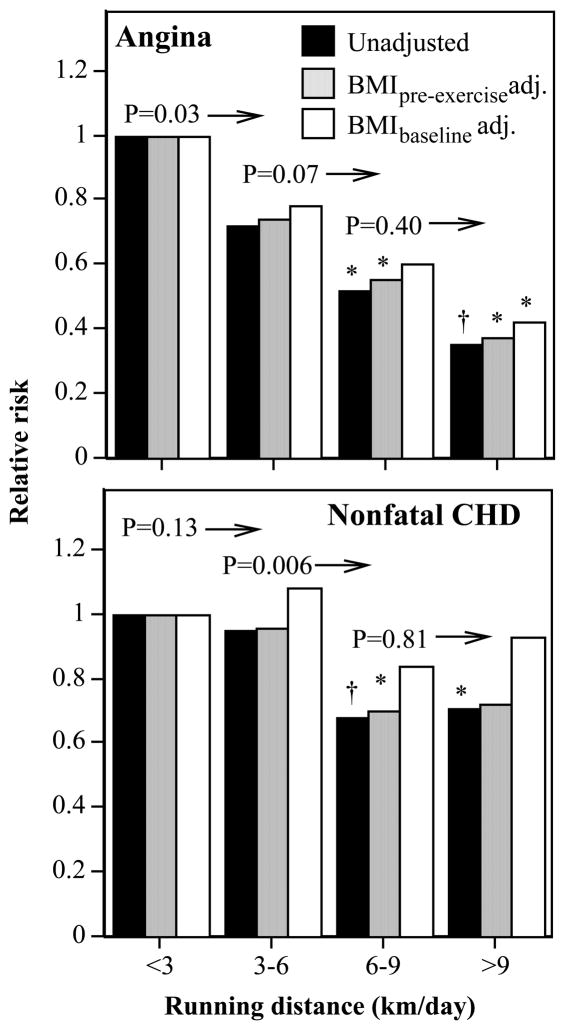Figure 1.
Relative risk from survival analyses of participant-reported physician-diagnosed angina and nonfatal CHD (i.e., myocardial infarction, revascularization procedures and angina) by physical activity (km/day running distance) in 28,287 men. Risks adjusted for age, education, intakes of meat, fish, fruit and alcohol, aspirin use, and pack-years of past cigarette use. Significance levels provided above the bars and to the left of the arrows are relative to all higher running distances (e.g., men who exceed 6 km/day have significantly lower risk for nonfatal CHD than men who average 3–6 km/day at P = 0.006). Significant differences relative to the lowest-mileage runners are coded *P < 0.05 and †P < 0.01.

